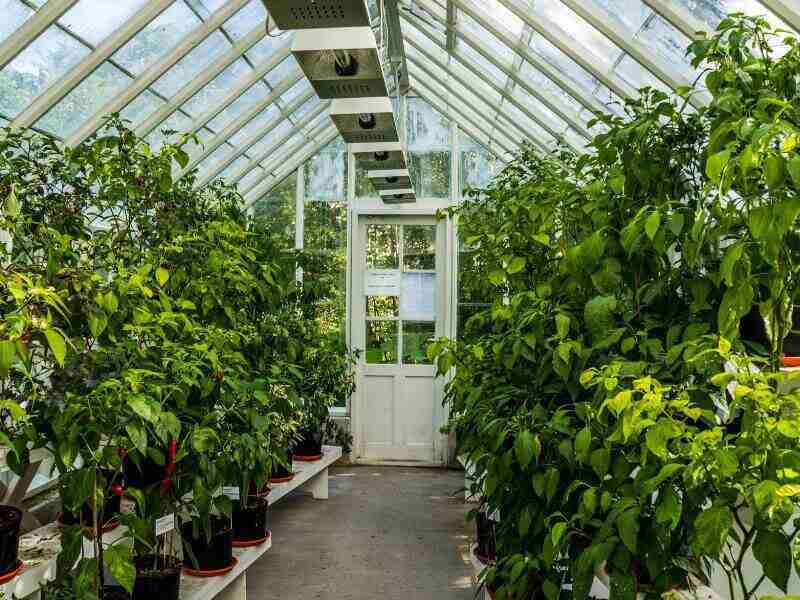Types of greenhouse roofs based on their appearance
In the construction of a greenhouse, it is necessary to pay attention to the type of roof because the type of material and coating used and the types of greenhouse roofs differ according to the size of the land and weather conditions.
Currently, millions of hectares of land are occupied by different types of greenhouses. If you are interested in gardening or growing agricultural products, you have probably thought about building a greenhouse.
There are many types of greenhouses in terms of materials and types of construction, but in this article we will examine the types of greenhouse roofs.
Before building a greenhouse, it is necessary to research its types and their applications, so stay with us until the end of this article.
Types of greenhouse roofs
One of the main ways to classify a greenhouse is to look at its appearance or structural style. Of course, each structure has advantages and disadvantages that must be considered when building a greenhouse.
Types of greenhouse roofs can be classified in the following categories based on their appearance:
1. Arched roof
The reason for using an arched roof in the construction of a greenhouse is to obtain the maximum air inside the greenhouse with the lowest level of coverage. In arched greenhouses, plastic cover is easily used and fixed to the structure. The presence of an arc makes the cover work well in both wind and wind directions.
As one of the types of greenhouse roofs, these structures have little wind resistance. The cheap tunnel greenhouse is easy to implement and install. Reducing energy consumption by 30% in the greenhouse due to the possibility of using the second cover is one of the advantages of the tunnel greenhouse.
.jpg)
Advantages:
- The possibility of using polyethylene coating
- Cheapness and lightness of the structure
- Maximum controllable air with minimum materials
- Reduction of fuel consumption
- Can be used for different types of agricultural products
- Simple and quick installation
Disadvantages:
- Poor ventilation
- Increased humidity
2. Gable roof
Gable roof greenhouse construction is generally used for glass greenhouses. A gable greenhouse is similar to the word A and is a perfect example of a greenhouse structure that provides plenty of space inside for growing plants all year round. It is possible to build a cheap gable roof greenhouse with common raw materials, including wood and plastic.
Advantages:
- There is enough space inside the structure for plants to grow
- Energy consumption is saved.
- By draining snow and rain from the roof, the lifespan of the structure increases.
- high resistance
- Excellent ventilatio
Disadvantages:
- Setting up a rooftop greenhouse is expensive.
- Requires a large piece of land.
3. Sawtooth roof
Fix all the defects of tunnel greenhouses by making a sawtooth greenhouse as a type of greenhouse roof. This greenhouse model is used for large areas. The slope of the roof of this greenhouse is such that it does not reflect sunlight in the summer season, but all the sunlight enters the greenhouse in the winter season. This feature of these greenhouses has made us say that you should use sawtooth greenhouses for building greenhouses in tropical areas.
.jpg)
Advantages:
- Strong and durable structure
- Getting enough light to plants in different seasons
- Existence of ceiling ventilation
Disadvantages:
- Suitable for areas above 40 degrees north
4. dome roof
The dome roof greenhouse is one of the types of greenhouse roof that has a sharp tip and does not need a truss for construction. This type of greenhouse can be built in different sizes from small to large and has an attractive appearance. Its shape is such that the problem of draining rain and snow from the roof is easily solved.
.jpg)
Advantages:
- Responds to all your gardening needs.
- It makes it easy to drain snow and rain.
- It does not require a truss.
Disadvantages:
- Compared to other types, it consumes more materials in the construction of the greenhouse.
- It does not facilitate sufficient air circulation to the corners of the greenhouse.
final word
Greenhouses help prolong the growing season by protecting plants from weather conditions and provide the possibility of gardening all year round. In addition, greenhouses also act as cover against pest attacks.
Regardless of the type you choose, building a greenhouse has many benefits. Greenhouses provide a controlled environment that is ideal for plants.
Building a greenhouse, whether it is a domed roof or a sawtooth and arched roof, will provide you with a high income in your business.

